Subjects: Physics, Astronomy, Earth Science, Space Science, Physical Science.
This episode discusses our understanding of the universe. From defining our cosmic address, discussing the lives and ideas of Copernicus and Giordano Bruno, introducing the cosmic calendar, and explaining how science is a cooperative enterprise spanning the generations.
It opens with this famous opening line from the 1980’s Cosmos by Carl Sagan:
“The universe is all there is, or was, or ever will be.”
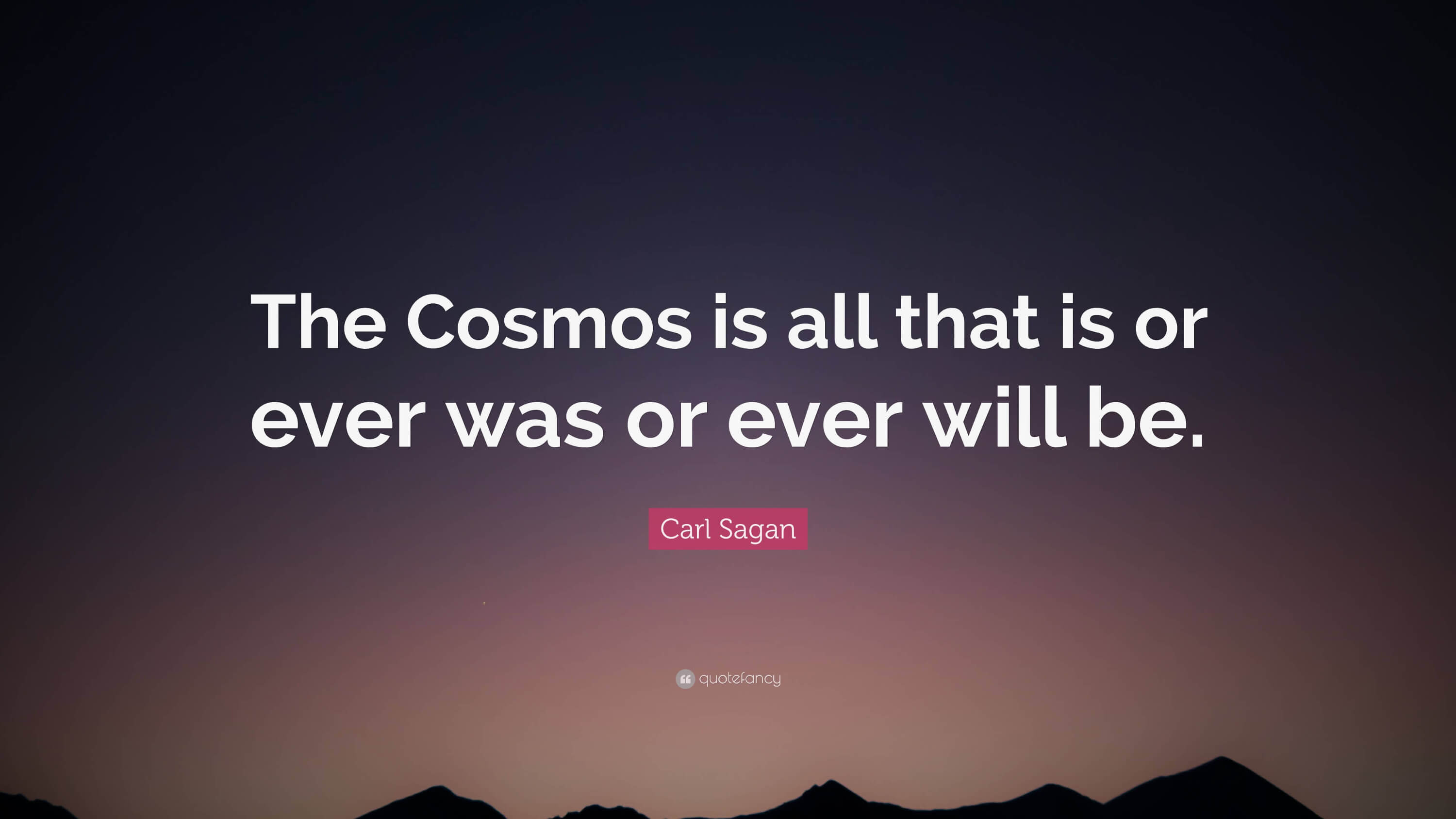
And reminds us that…
- The Foundation of science are laid by generations of searchers, adhering to a simple set of rules -
- Test ideas by experiment and observation
- Build on those ideas that pass the test and reject the ones that fail
- Follow the evidence wherever it leads
- Question everything
Our Solar System
The Sun is the centre of the Solar System and it also powers our world and holds other planets in orbit.
Mercury
The closest one to the Sun.
Venus
It is dense cloud covered, plagued with a runaway greenhouse effect which causes it to be even hotter than Mercury and makes it A hell for life to thrive.
Earth
Our Home.

Mars
Has as much land as the Earth itself.
Asteroid belt
A belt of rocky asteroids between Mars and Jupiter.
Jupiter
The Galilean moons are the four largest moons of Jupiter — Io, Europa, Ganymede, and Callisto. And almost a dozen little ones too. Jupiter has a solar system of its own, it has more mass than all the other planets combined.
The Great Red Spot - There is a raging hurricane on Jupiter, and it is three times as large as the size of the Earth, it has been raging for centuries now.
Here is a video from NASA explaining The Great Red Spot of Jupiter - NASAJuno
 Image Credits: NASA, ESA, and A. Simon (NASA Goddard)
Image Credits: NASA, ESA, and A. Simon (NASA Goddard)
It has been of a great subject of interest for astronomers and recently NASA’s Juno spacecraft flew over it revealing more about the storm. You can fly “into” the storm, as NASA created a visualization for it - NASA.
To know more about the Juno Mission, see this video - TechInsider.
Saturn
It has rings made up of small rocks floating around in space such that each one can be called its “moon”.
Uranus & Neptune
The outer planets, and were discovered after the invention of the telescope.
Pluto
The most distant one, it is a dwarf planet.
Voyager-1
Voyager-1 is a space probe launched on 5 September 1977 by NASA. It is the most distant man-made object from Earth, at a distance of 2.1289×1010 km or 21.289 billion km from the Sun as of 4 June 2018.
You can see live stats of the probe here.
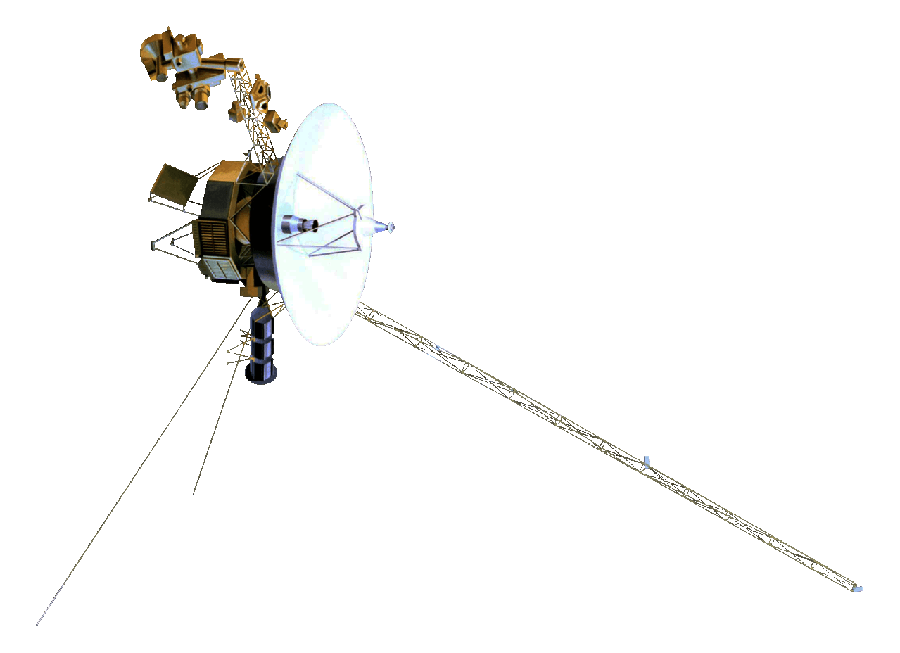
But this is not the only thing that is interesting about this probe. This probe carries a gold-plated disc in case the spacecraft should ever be found by intelligent life forms. The disc carries photos of the Earth and its lifeforms, a range of scientific information, spoken greetings from people such as the Secretary-General of the United Nations and the President of the United States and a medley, “Sounds of Earth,” that includes the sounds of whales, a baby crying, waves breaking on a shore and a collection of music, including works by Mozart. Other Eastern and Western classics are included, as well as various performances of indigenous music from around the world. The record also contains greetings in 55 different languages.
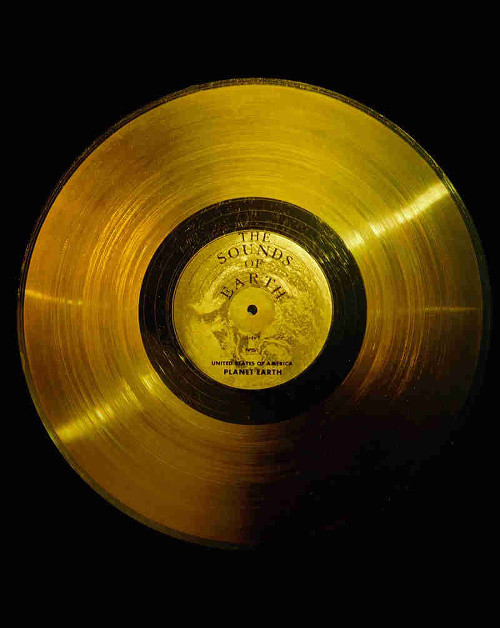
Oort Cloud
The Sun extends its gravitational pull in all directions further and trillions of icy particles and comets get pulled in forming a roughly spherical cloud called the “Oort Cloud”. But, no one can see the cloud, because they are farther away from each other, the nearest ones are as far away as the Earth from Saturn.
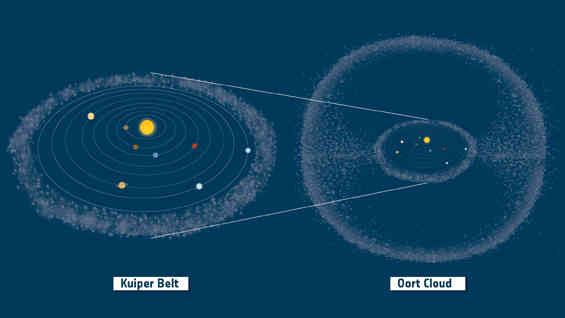 Image Credit: ESA
Image Credit: ESA
 Image Credit: FOX
Image Credit: FOX
Our “Cosmic Address”
Much like we have an address on the Earth, to locate ourselves in this vast boundless cosmic ocean, we need a cosmic address.
Level 1 - Earth
The place where we live formed some 4.54 billion years ago. Mostly covered with water, has sustained life for almost a 3.8 billion years now. Extremely new and fragile.
Level 2 - Solar System
Comprises of 8 planets and a dwarf planet. All the planets revolve in synchronized motion around the Sun, its centre.
Level 3 - Milky Way Galaxy

Andromeda Galaxy - It is located 2.5 million light-years from our sun and it is the nearest galaxy to us. Four billion years from now, our galaxy, the Milky Way, will collide with Andromeda also known as Messier 31. It consists of around 1 lakh crore stars, our galaxy, the Milky Way has only around 30,000 stars.
 Image Credit: NASA/JPL-Caltech/UCLA
Image Credit: NASA/JPL-Caltech/UCLA
Level 4 - Local Group
Together, we, Andromeda and more than 54 galaxies form a Local Group. Between 1 billion and 1 trillion years from now, they will collide and form a single galaxy.
Refer here for a large, zoomable image of the Local Group - Wikipedia
Level 5 - Virgo Supercluster
A supercluster is a mass concentration of galaxies that include our galaxy and the local group.
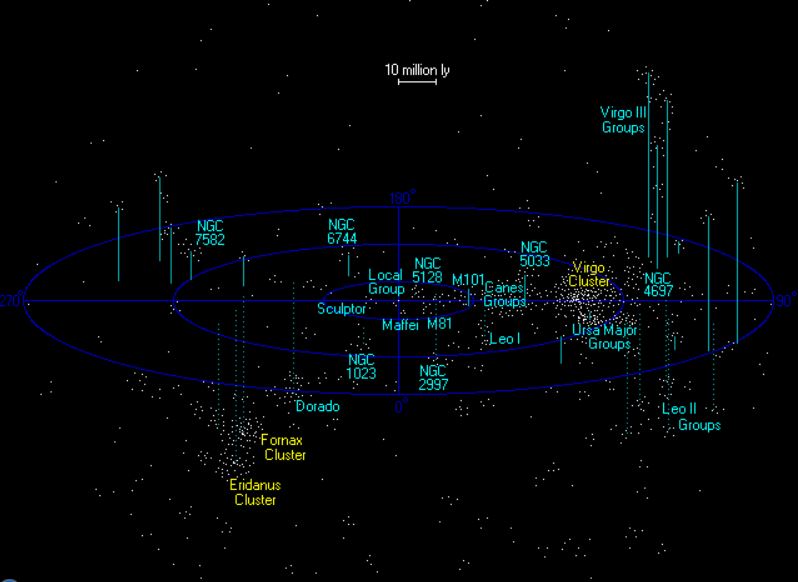
 Image Credit: Wikimedia Commons/Kees Schere
Image Credit: Wikimedia Commons/Kees Schere
Level 6 - Observable Universe
Quoting Dr.Tyson,
“This is the cosmos on the grandest scale we know, a network of a hundred billion galaxies.”
The edge of the observable universe is the light that took 13.8 billion years(age of our universe) to travel to us and eventually be seen by our eyes. The light before that has not reached us yet and we cannot see, but speculate how our universe looks beyond that, or before that.
The “Atlas of the Universe” created by Richard Powell is an interactive map you might want to explore if you want to experience the humongous size and the sheer grandeur of the universe.
Here is a good chart which summarizes our cosmic address - Wikipedia
Multiverse
The idea of ours not being the only universe, there might be other universes, all separate from each other completely. Each one is like a bubble, separated by time or space.
 Image credit: Jaime Salcido / EAGLE Collaboration.
Image credit: Jaime Salcido / EAGLE Collaboration.
minutephysics from YouTube made a great video on this and the multiverse is better explained by him than I ever could -
The True Science of Parallel Universes - minutephysics
Parallel Universes: Many Worlds - minutephysics
The story of an infinite universe
If we move back into history, we’ll see that it is filled with instances of people believing in things that turned out to be the opposite of reality. One such example is the idea of a heliocentric model of our solar system. Everybody in the 16th century believed that the Earth was the centre of the universe, the only world, and it is bounded, not boundless as we believe it to be today.
Only one man on the whole planet in 16th century envisioned an infinite universe. A Polish astronomer and priest named Nicolaus Copernicus proposed Earth was not the centre, it revolves among many others around the Sun.
Giordano Bruno was an Italian scientist and philosopher who was also a priest for some time. He stumbled upon the books “banned” by the church and formulated his view of “an infinite universe created by an infinite God”. The most notable book being “De Rerum Natura, Liber Tertius” (On the nature of things) by Lucretius.
Lucretius in his book described an interesting thought experiment -
Lucretius asks the reader to stand at the edge of the universe and shoot an arrow outward, if the arrow keeps going then clearly the universe extends beyond what is thought to be the edge, but if the arrow hits a wall, then that wall must lie beyond our boundary of the universe, now if we stand on that wall and shoot an arrow, then the same two outcomes: the arrow flies forever or it hits a boundary, where we must shoot another one, either way, the universe is boundless, the cosmos is infinite.
For Bruno, it made perfect sense as his God was also infinite, so how, he reasoned. could creation be any less?, he was banished from Italy. In his dream, he visualized the universe as a tent with stars painted on the ceiling, when he got out of the tent in his dream, he discovered the true infinite universe created by his God.
“I spread confident wings to space and soared toward the infinite, leaving far behind me what others strained to see from a distance. Here, there was no up, no down, no edge, no centre. I saw that the Sun was just another star, and the stars were other Suns, each escorted by other Earths like our own. The revelation of this immensity was like falling in love.”
He wandered Europe as a traveling philosopher, lecturing in various universities about this idea. He found himself in trouble around 1584 when he published his book Dell Infinito, universo e mondi (Of Infinity, the Universe, and the World). He was excommunicated by the Roman Catholic Church in Italy, expelled by the Calvinists in Switzerland and by the Lutherans in Germany. He jumped an invitation to deliver a lecture in England. He thought that this was his chance to prove, he lectured the idea of another Worlds (Earths) and Suns and how every star that we see is a Sun of another world. He further said that
“Our infinite God has created a boundless universe with infinite worlds for us”. “I beg you, reject antiquity, tradition, faith, and authority. Let us begin anew by doubting everything we assume has been proven”.
Scholars called him ignorant, heretic, and an infidel.
He was lured to Rome with the promise of a job. The Roman Catholic Church maintained a system of courts known as the Inquisition and its sole purpose was to investigate and torment anyone who dared voice views that differed from theirs. This wanderer, who worshiped an infinite universe, languished in confinement for eight years. Through relentless interrogations, he stubbornly refused to renounce his views. Why was the Church willing to go to such lengths to torment Bruno? What were they afraid of? If Bruno was right, then the sacred books and the authority of the Church would be open to question.
He was handed a death sentence. The court said -
“You are found guilty of questioning the Holy Trinity and the divinity of Jesus Christ. Of believing that God’s wrath is not eternal, that everyone will be saved. Of asserting the existence of other worlds. All of the books you have written will be gathered up and burned in St. Peter’s Square.”
Even the death sentence handed down to him did not change his attitude as he defiantly told his accusers -
“It may be you fear more to deliver judgment upon me than I fear judgment.”
On February 19, 1600, he was driven through the streets of Rome, stripped of his clothes and burned at the stake. Today, a monument stands in the Campo de Fiori in Rome, with a statue of Bruno, honouring a man who knew science to be true and refused to let religious dogma change the facts.
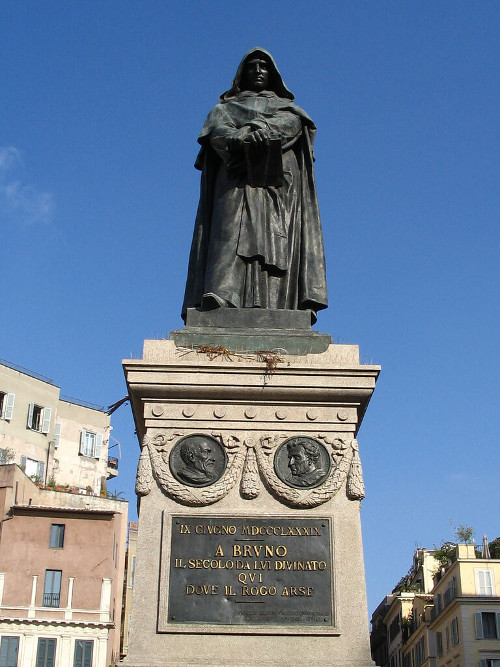
Cosmic Calendar
If we were to take all the time the universe is formed (approximately 13.8 billion years) and compress that into a single Earth year. We are presented with a scale of time to compare events, their duration and the time gap between them. It shows how new we are in the cosmos.
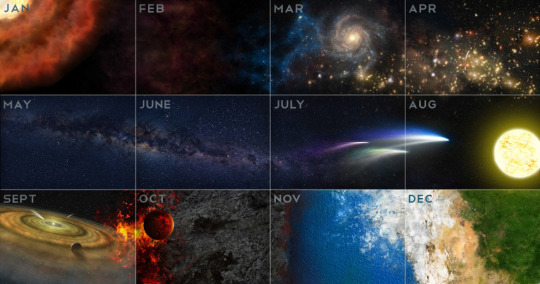
Here is the entire timeline -
• Big Bang - 1 January
↕ Darkness for nearly 200 million years after that
• First stars formed - 10 January
• First galaxies formed - 13 January
• Milky Way forms - 15 March
↕ Six billion light years pass
• Our sun forms - 31 August
• Life originates on Earth - 21 September
• First land-based animals on Earth - 17 December
• First flower bloomed - 28 December
• Dinosaurs go extinct - 30 December
• Humans evolved - 31 December, 11:00 pm (last hour of the last day of our cosmic year)
• First cave paintings - 31 December, 11:59 pm (last minute of the last hour of the last day)
This is the time we invented Astronomy, possibly the oldest science in the world. We’re all descended of astronomers, our survival depended on knowing how to read the stars in order to predict the coming of the winter and the migration of the wild herds.
And then, around 10,000 years ago, there began a revolution in the way we lived. Our ancestors learned how to shape their environment, taming wild plants and animals, cultivating land and settling down. This changed everything. For the first time in our history, we had more stuff than we could carry. We needed a way to keep track of it, we started recording everything.
• Invented writing (recorded history begins) - 31 December, 11:59 and 46 seconds
Moses was born 7 seconds ago, Buddha, 6 seconds ago, Jesus, 5 seconds ago, Mohammed, 3 seconds ago. 2 seconds ago, two halves of the Earth discovered each other.
“All of recorded history occupies only the last 14 seconds, and every person you’ve ever heard of lived somewhere in there. All those kings and battles, migrations and inventions, wars and loves, everything in the history books happened here, in the last seconds of the Cosmic Calendar.” - Carl Sagan
It was only in the very last second of our Cosmic Calendar that we began to use Science to reveal nature’s secrets and her laws. The scientific method is so powerful that in a mere four centuries, it has taken us from Galileo’s first look through a telescope at another world to leaving our footprints on the Moon. It allowed us to look out across space and time to discover where and when we are in the universe.
“We are a way for the cosmos to know itself.” - Carl Sagan
• Today - Midnight, 31 December
Explore the full high-quality image of the cosmic calendar yourself - click here.
Origin of life
Origin of life is one of the greatest mysteries of Science. Life originated in the oceans. Tiktaalik was one of the first animals to venture onto land. Must have felt like visiting a new planet.
 Image Credit: Zina Deretsky, New Dinosaurs
Image Credit: Zina Deretsky, New Dinosaurs
Science
The following is an excerpt from the episode -
“Carl Sagan guided the maiden voyage of Cosmos a generation ago. He was one of the most successful science communicators of the 20th century, but he was first and foremost a scientist. He contributed enormously to our knowledge of the planets. He correctly predicted the existence of methane lakes on Saturn’s giant moon Titan. He showed that the atmosphere of the early Earth must have contained powerful greenhouse gases. He was the first to understand that seasonal changes on Mars were due to windblown dust. Carl was a pioneer in the search for extra-terrestrial life and intelligence. He played a leading role in every major spacecraft mission to explore the solar system during the first 40 years of the Space Age.”
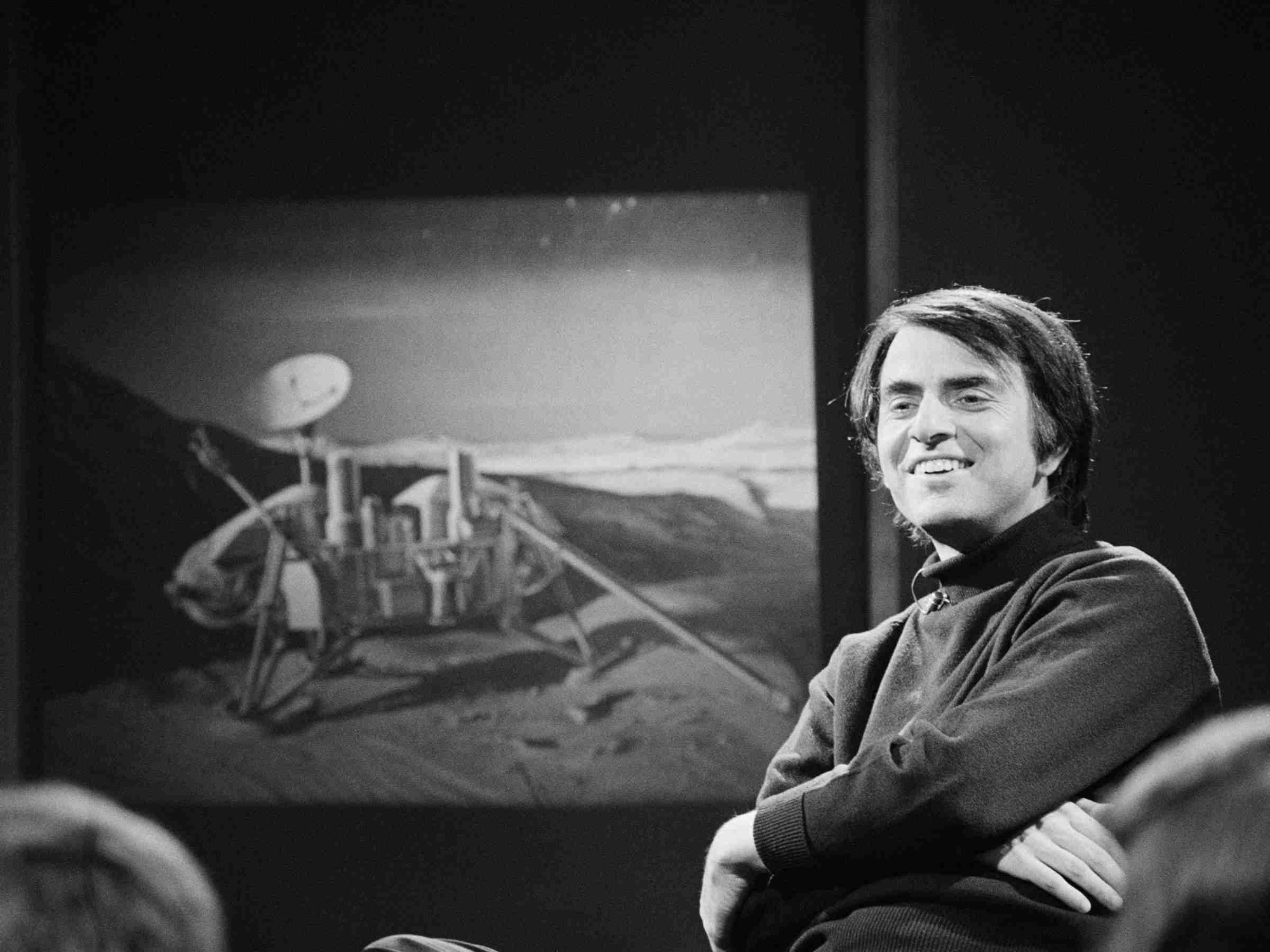
He has reached out to countless individuals, inspiring so many to study, teach and do science.
“Science is a cooperative enterprise, spanning the generations. It’s the passing of a torch from teacher to student to teacher, a community of minds reaching back to antiquity and forward to the stars.” - Neil deGrasse Tyson